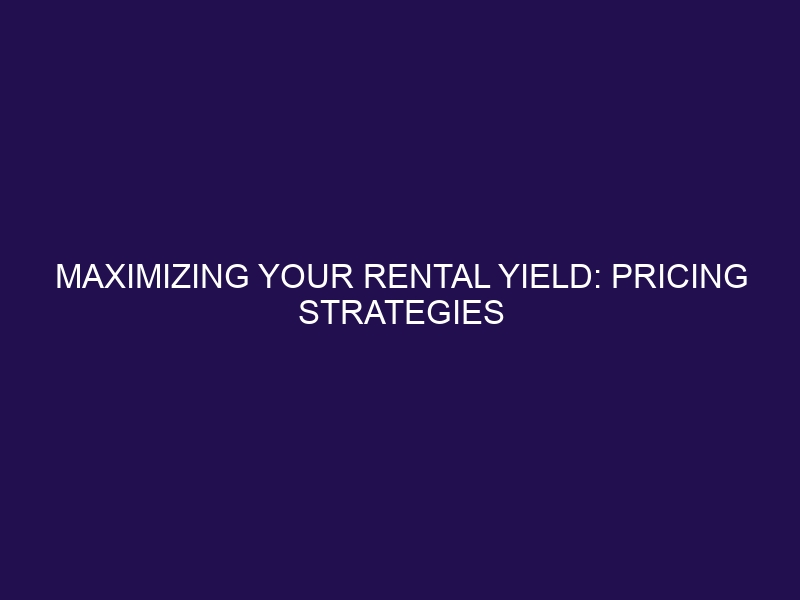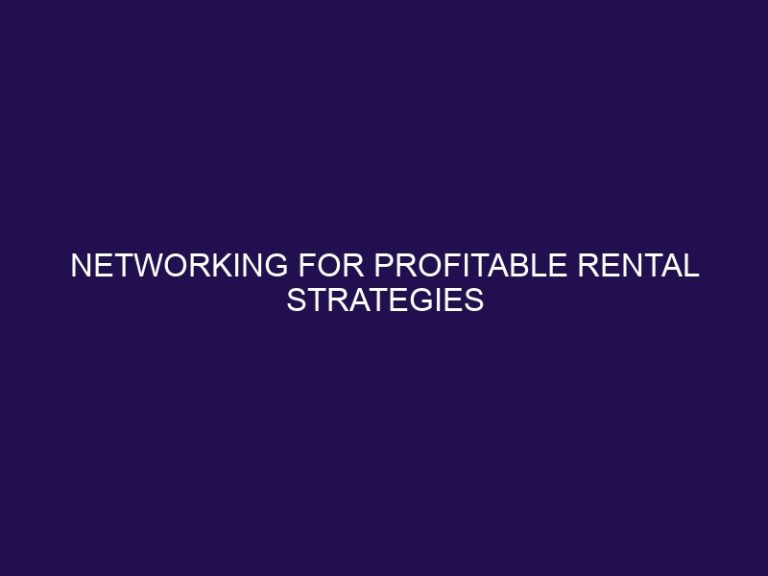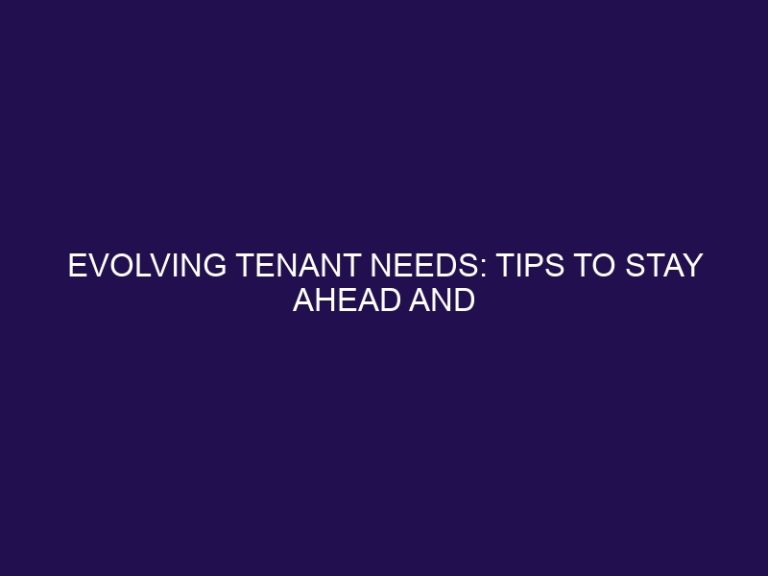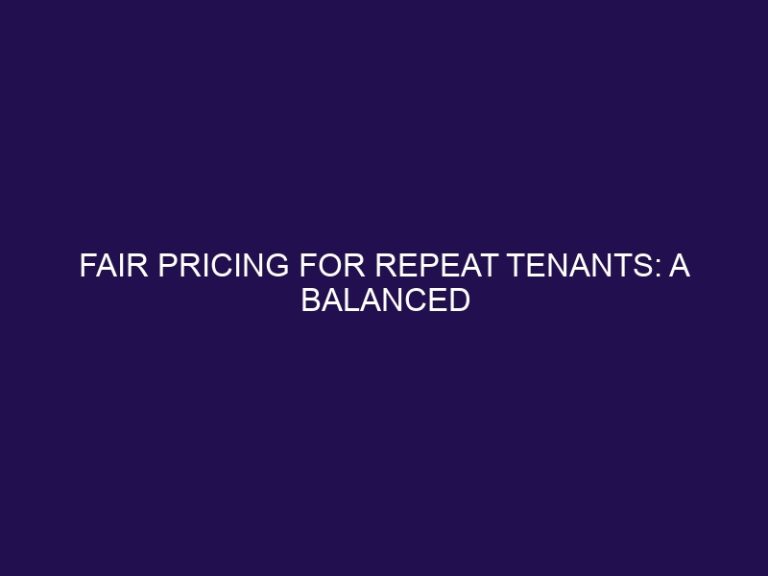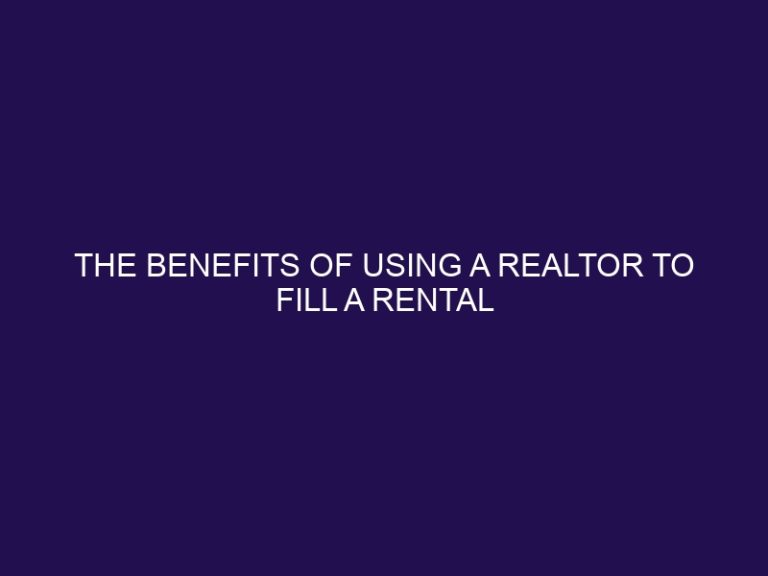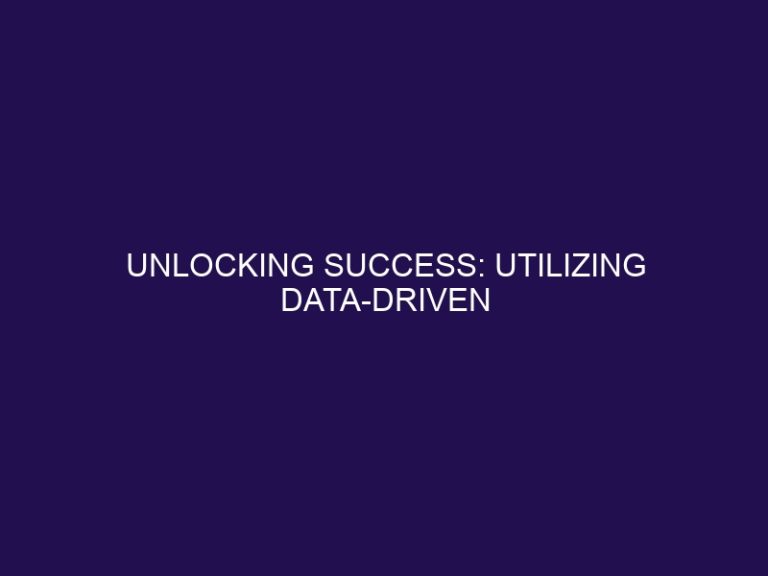Maximizing Your Rental Yield: Pricing Strategies
Rental yield is a crucial aspect for property investors looking to maximize their profits from rental properties. It refers to the percentage of annual rental income generated from a property in comparison to its total value. As a property owner, understanding rental yield and implementing effective pricing strategies is essential for maximizing your rental yield and achieving a profitable return on your investment.
Rental yield is calculated by dividing the annual rental income by the property’s total value and then multiplying it by 100. For example, if your annual rental income is $30,000 and your property’s total value is $500,000, your rental yield would be 6%.
Maximizing rental yield is vital for property owners as it allows them to optimize their profits and maintain a competitive edge in the market. Higher rental yield translates to more income, which can be reinvested or used to cover expenses such as mortgage payments, maintenance costs, and property taxes.
Several factors can affect rental yield, including location, property type, market demand, and amenities/upgrades. Therefore, implementing effective pricing strategies is crucial to ensure a high rental yield. Here are the four main pricing strategies for maximizing rental yield:
- Market-based pricing: This involves setting your rental rates according to the current market demand and prices of similar properties in the area.
- Value-based pricing: This strategy considers the unique features and benefits of your property to set a higher rental rate.
- Cost-based pricing: This approach involves determining the total cost of the property, including any renovations or upgrades, and setting the rental rate accordingly.
- Dynamic pricing: This is a more flexible strategy that involves adjusting rental rates based on market trends and demand.
Each pricing strategy has its own pros and cons, and it is essential to evaluate them based on your property’s location, type, and target market to determine the most effective one for your rental property. Additionally, regularly reviewing and adjusting your rental rates can help you stay competitive and maximize your rental yield.
Other tips for maximizing rental yield include maintaining your property’s condition, offering desirable amenities and services, and building positive relationships with tenants. By implementing these strategies, you can achieve a high rental yield and make the most out of your investment property.
What Is Rental Yield?
Rental yield is a percentage that represents the annual rental income generated from a property, relative to its value. It is a measure of the potential return on investment that can be achieved by renting out a property.
To optimize rental yield, it is important to take into account factors such as:
- location
- property management
- market demand
How Is Rental Yield Calculated?
- Determine annual rental income
- Calculate property value
- Divide annual income by property value to determine rental yield
Pro-tip: Regularly review local rental market trends to adjust pricing for maximum yield.
Why Is Maximizing Rental Yield Important?
Maximizing rental yield is crucial for landlords as it directly affects profitability, property valuation, and overall investment return. It guarantees a consistent income flow, helps cover expenses, and enhances the property’s resale value.
What Are the Factors That Affect Rental Yield?
When it comes to maximizing your rental yield, there are various factors that can influence your success. These factors can vary from the location of your rental property to the type of property you own. In this section, we will delve into the key elements that can impact your rental yield and how you can use them to your advantage. From understanding the importance of location and property type, to considering market demand and amenities, we will explore the various factors that play a crucial role in determining your rental yield.
1. Location
- Research the neighborhood’s safety, amenities, and proximity to transport, all of which are important factors when considering a location.
- Analyze the area’s rental demand and vacancy rates to get a better understanding of the rental market in the chosen location.
- Evaluate the neighborhood’s growth and development plans to determine the potential for future growth in the location.
Did you know? The location can have a significant impact on rental yield, with some estimates showing up to a 30% difference in yield based on location.
2. Property Type
- Single-Family Homes: An ideal choice for long-term tenants seeking stability and ample space.
- Multi-Family Properties: Offers a higher potential for rental income, but requires more management.
- Condominiums: Attracts tenants seeking amenities and low maintenance.
- Townhouses: A perfect balance of privacy and community living, suitable for families or young professionals.
3. Market Demand
- Analyze market demand for rental properties by utilizing real estate websites and government reports.
- Survey the occupancy rates and rental prices of similar properties in the area to determine current trends.
- Conduct interviews with local property managers and real estate agents to gauge market demand and rental trends.
In 2008, the economic recession caused an increase in market demand for rental properties in urban areas, leading landlords to adjust their pricing strategies accordingly.
4. Amenities and Upgrades
- Amenities and upgrades, such as modern kitchen appliances, energy-efficient features, and high-speed internet, can be attractive to potential tenants.
- Investing in upgrades like a gym, pool, or smart home technology can justify charging higher rents.
- Choosing durable, low-maintenance amenities can lead to long-term cost savings.
Pro-tip: Consider conducting a survey to better understand tenant preferences for amenities and upgrades.
What Are the Different Pricing Strategies for Maximizing Rental Yield?
As a rental property owner, achieving a high rental yield is essential for maximizing profits. One crucial factor that contributes to rental yield is the pricing strategy. In this section, we will discuss the various pricing strategies that can help you maximize your rental yield. From market-based pricing to dynamic pricing, we will explore the different approaches and how they can impact your rental income. By understanding these strategies, you can determine which one aligns best with your goals and property.
1. Market-Based Pricing
- Conduct thorough research of the local rental market to gain understanding of pricing trends.
- Analyze comparable properties to determine competitive rates based on market-based pricing.
- Adjust prices accordingly based on the demand and supply dynamics of the market.
- Regularly review and update pricing to ensure competitiveness.
Consider seeking assistance from a property management company for expert insights and support in implementing market-based pricing strategies.
2. Value-Based Pricing
- Understand value-based pricing: Set rental rates based on the perceived value of the property by tenants, taking into account its features, location, and market demand.
- Assess property uniqueness: Evaluate how the property’s unique features and amenities contribute to tenant’s perception of value.
- Adjust pricing strategy: Continuously review and adjust rental rates based on any property enhancements and changes in the market.
3. Cost-Based Pricing
- Calculate all fixed and variable costs associated with the rental property.
- Include mortgage payments, property taxes, insurance, maintenance, and vacancies.
- Divide the total costs by the number of rental days to determine the daily cost.
- Set the rental price based on the cost and desired profit margin using cost-based pricing.
4. Dynamic Pricing
- Utilize data analytics to assess demand and adjust prices accordingly.
- Consider peak and off-peak periods to optimize rental income.
- Implement automated pricing tools for flexibility and responsiveness.
- Regularly monitor market trends to adapt pricing strategies effectively.
Embracing Dynamic Pricing can enhance rental yield by tailoring rates to real-time market dynamics and tenant demand.
What Are the Pros and Cons of Each Pricing Strategy?
When it comes to maximizing your rental yield, choosing the right pricing strategy can make all the difference. However, with so many options available, it can be overwhelming to know which one to choose. In this section, we will discuss the pros and cons of four different pricing strategies: market-based, value-based, cost-based, and dynamic pricing. By understanding the unique advantages and disadvantages of each approach, you can determine which one is best suited for your rental property.
1. Market-Based Pricing
- Utilize market-based pricing by analyzing local rental market prices for similar properties.
- Adjust your rental rates according to market trends and demand to stay competitive.
- Regularly monitor competition to ensure your rental rates remain competitive.
- Take seasonal fluctuations into consideration when setting rental prices.
Suggestions: Stay updated on market changes to optimize rental rates. Consistently assess demand and competition to maintain a competitive edge.
2. Value-Based Pricing
- Understand the Value: Evaluate the unique features and benefits of your rental property.
- Assess Market Perception: Research similar properties and gauge their perceived value.
- Set Competitive Prices: Align your rental rates with the perceived value of your property and utilize a value-based pricing strategy.
- Review Regularly: Continuously assess and adjust prices based on market changes and tenant feedback.
3. Cost-Based Pricing
-
Calculate costs: Determine all expenses including mortgage, insurance, property taxes, maintenance, and management fees.
-
Set desired profit margin: Decide on the profit percentage you want to achieve.
-
Factor in market rates: Analyze rental rates in the area to set competitive pricing for Cost-Based Pricing.
4. Dynamic Pricing
- Utilize data-driven tools to analyze demand fluctuations.
- Adjust rental rates based on seasonal trends and local events.
- Implement dynamic pricing software for automated rate adjustments.
- Offer personalized discounts to attract long-term tenants.
Suggestions: Emphasize flexibility and responsiveness to market dynamics for optimal rental yield.
How Can You Determine the Most Effective Pricing Strategy for Your Rental Property?
- Research similar properties in the area to analyze their pricing.
- Consider the local demand and supply to determine competitive rates.
- Factor in property features, amenities, and upgrades when setting prices.
- Regularly review and adjust prices based on market trends.
In the 1920s, rental rates in metropolitan areas skyrocketed due to increased urbanization and industrial growth, leading to a housing shortage.
What Are Some Additional Tips for Maximizing Rental Yield?
Consider implementing upgrades such as modern appliances, energy-efficient features, and smart home technology to maximize your rental yield. Additionally, offering furnished options or including utilities can attract higher-paying tenants.
Emphasize the importance of property maintenance to retain tenants and enhance the overall rental appeal.
Frequently Asked Questions
What are some effective pricing strategies for maximizing rental income?
Market research, understanding the property and tenants, implementing seasonal pricing, offering incentives and discounts, and adjusting rent prices annually.
How can understanding the market and property help in setting the right rental price?
Knowing the unique features and benefits of your rental property can justify a higher rental price. Additionally, conducting market research can help determine the competitive rental price that will attract tenants and maximize income.
Is offering discounts or incentives a good pricing strategy?
Yes, offering discounts for longer leases or rent reductions for tenant referrals can attract tenants and encourage lease renewals, ultimately maximizing rental income.
How often should rent prices be adjusted?
Many property managers choose to adjust rent prices annually to keep up with inflation and market changes.
Can a property management service help with effective pricing strategies?
Yes, a property management service can provide expert guidance and assistance in implementing thoughtful pricing strategies to maximize rental income.
How can buying multiple properties contribute to maximizing rental income?
Buying multiple properties can help spread risk and increase monthly cash flow, ultimately maximizing earnings.

